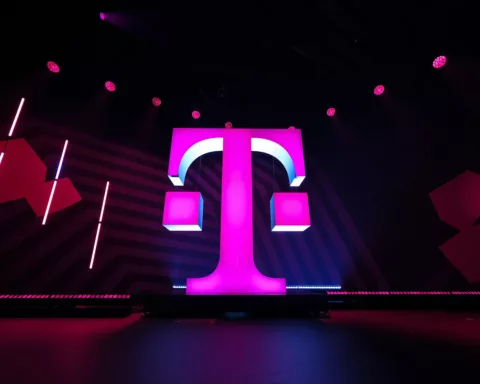For the first time, Deutsche Telekom and RTL Deutschland have broadcasted live TV content via the 5G standalone network of Deutsche Telekom. The technology was used by ntv for a live interview ahead of the Digital X tech trade fair in Cologne.
A virtual network section was used to transmit high-quality moving images in a stable and smooth way. This ensures the high bandwidths required and even works for busy mobile network cells. The basis for this solution is a technology called network slicing.
“5G network slicing makes its TV debut! The latest mobile communications standard supports the transmission of data-intensive video signals in real time. 5G network slicing makes this possible. With the tests conducted so far and the first live interview via 5G network slicing on ntv, we have reached a major milestone. Our partnership with RTL Deutschland continues successfully. Together, we are now working on connecting journalists even closer to their audience,” said Claudia Nemat, member of the Telekom Board of Management and responsible for technology and innovation.
“Our goal is to provide our viewers and users with the best and fastest information from anywhere and at any time. 5G network slicing is an important tool for this and therefore strengthens our independent journalism. The 5G standalone network from Deutsche Telekom has once again exceeded the high demands of TV production. This will allow our journalists to put this technology to work in real broadcasting operations in the future. 5G Standalone and network slicing enable reliable live broadcasts,” said Stephan Schmitter, Managing Director RTL NEWS and chief journalistic content officer RTL Deutschland.
Mobile TV Journalism using 5G network slicing
Live broadcasts on the move are becoming increasingly important in TV journalism. 5G standalone with network slicing will play a key role in this context. Broadcasting video signals with 5G standalone will increase the efficiency of TV productions. In the future, high-quality videos can be reliably broadcasted in real time using only smartphones and 5G network slicing.
Many TV stations have been using satellites to go live on air. For this purpose, they use not so agile and expensive vehicles. Such vehicles usually weigh more than 3.5 tons. Alternatively, a backpack with a transmission unit from the manufacturer LiveU is used. Up to now, this module has bundled up to eight mobile radio cards. It is not possible to define specific properties for connections. In heavily utilized radio cells, this so-called “best-effort approach” via LTE reaches qualitative limits. RTL Deutschland now uses only one 5G SIM card in the LiveU backpack for its tests. With the help of network slicing, the broadcast achieves the same performance and quality with ensured upload speed. It enables the broadcasting of live videos in HD quality.
Live, jitter-free images with 5G network slicing
During tests, the engineering teams transmitted video signals from four cameras simultaneously in real time and in a stable way using 5G network slicing. Network slicing is a key feature of 5G Standalone, the network that is independent of LTE. It allows multiple, virtual network slices to be created. These operate independently of each other. They are hosted in a single network infrastructure. The technology enables the virtual network sections to be given different service characteristics. This means they can be adapted to individual needs.
With live TV via 5G network slicing, Telekom and RTL Deutschland are focusing their partnership on innovative technologies as well. The collaboration extends the strong cooperation around RTL+ and MAGENTA TV.






